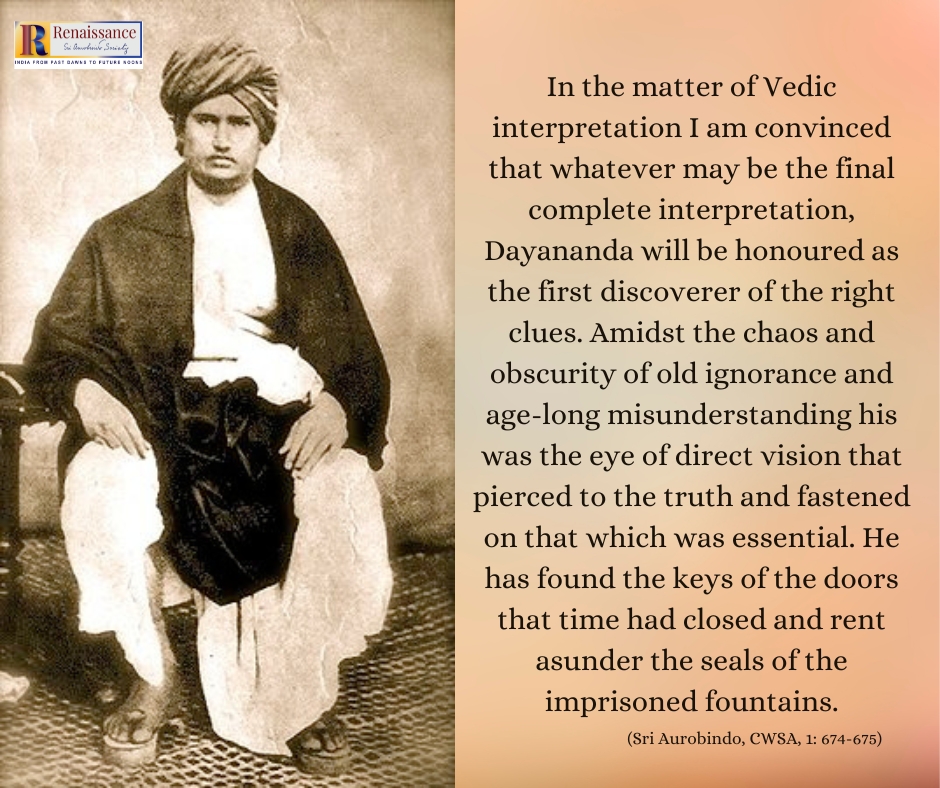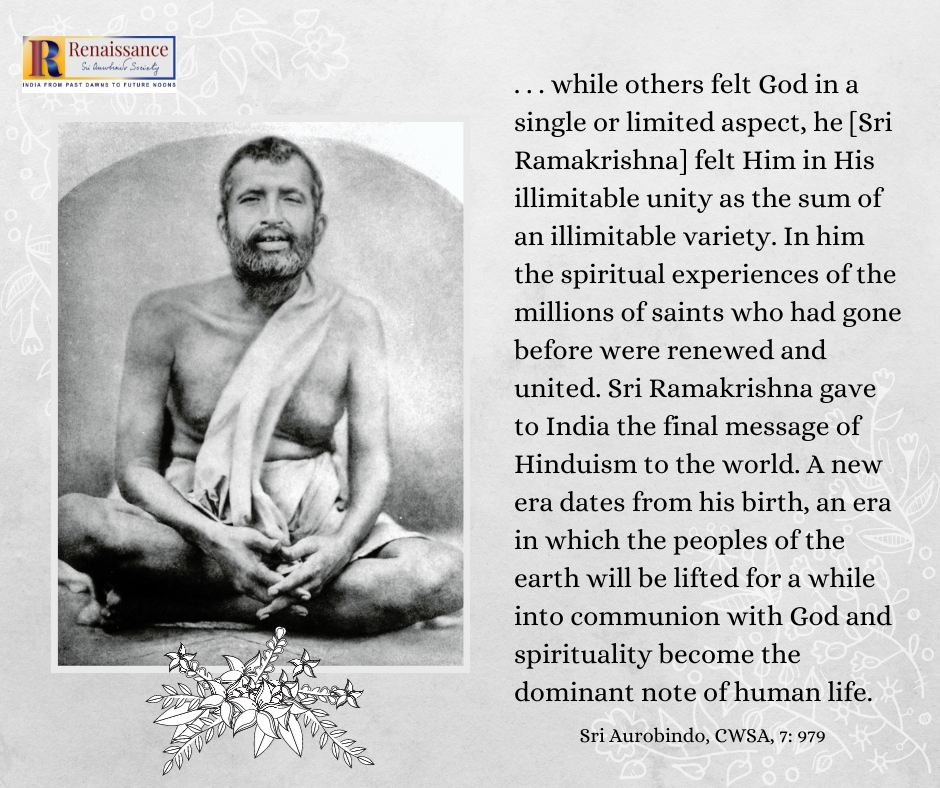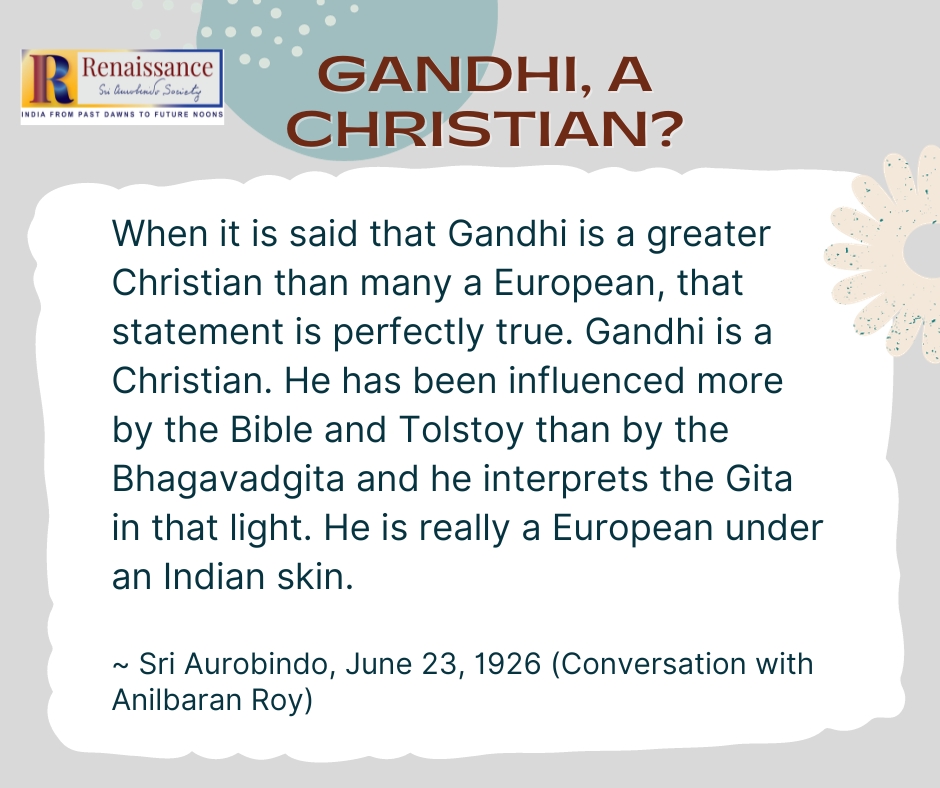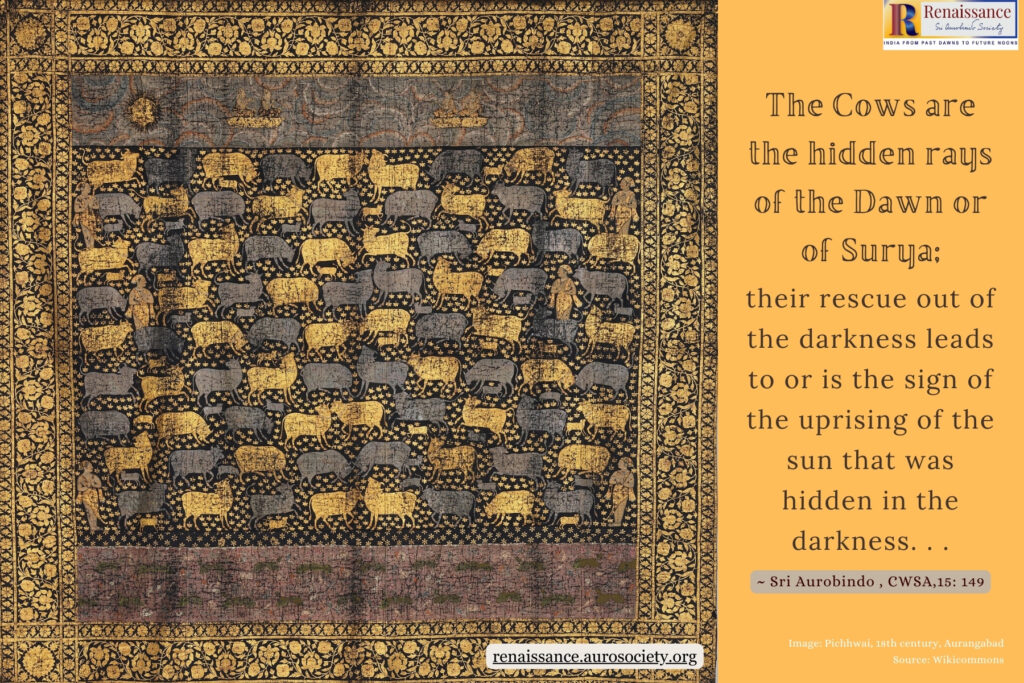CONTINUED FROM PART 1
Some Attempts to Rebuild Life in India on a New Basis
There have been various attempts to rebuild life in India on a new basis. The powers behind a few of them may be mentioned here:
- Raja Rammohan Roy
- Swami Dayanand Saraswati
- Sri Ramakrishna Paramahansa
- Rabindranath Tagore
- Mahatma Gandhi
- Jawaharlal Nehru
- Sri Aurobindo
These great men have tried to live, according to their faith, the aspect of Indian culture which appeared to them the most important. An outline of the approach of each and its appraisal is all that can be attempted here.
Swami Dayanand, the Protestant Reformer
Swami Dayanand began his reformist movement, really, when at the age of 13. Seeing the rats going over the image of Shiva on a Shivratri night, he ran away from his house in Saurashtra in search of the truth of Indian religion. Becoming a Sannyasi, he studied the Vedas and courageously founded the Arya Samaj on the basis of the Veda, the first book of humanity, and the fountainhead of Indian Culture.
He gave a new interpretation of the Veda, discarded untouchability, encouraged widow re-marriage and tried to stop the mass conversions of the poor in India to Christianity. He wanted to revive the old Vedic Society and Culture as he understood them. Though he introduced many reforms in Hindu religious practice and society, he could not (not being fully familiar with the elements and forces of Western Culture) see the necessity and the form of the synthesis that was necessary.
That Indian Culture was far more elastic and capable of absorbing and assimilating new elements and even forces of a true culture did not strike him. The life of this bold genius was cut short at forty-eight when he was poisoned by his enemies.
Sri Aurobindo has paid a glowing tribute to Swami Dayanand. Arya Samaj is the reformist religious organisation spread out not only in India but in many foreign countries. The Gurukula system of education is an attempt to mould the future generations into Vedic Aryans. The attempt has not succeeded in overcoming the stress of modern European culture on the minds of Indians even after freedom, perhaps because of its insistence on the externals of Indian Religion.

Rammohan Roy, the Imitative Reformer
Rammohan Roy may be called an imitative reformer, if Dayanand is a protestant reformist. He was among the first to oppose the blind orthodoxy of Hindu Religion. He founded the Brahmo Samaj based on some ideas of the Unitarian Church and Upanishadic Vedanta.
Rammohan Roy worked, even at great risk, for the emancipation of Indian womanhood, one of his outstanding achievements being the abolition of the sati. ‘Fatherhood of God and Brotherhood of man’ was the inspiring ideal of his life.
Sri Ramakrishna Paramahansa, with whom began the “work of raising India”
More than Dayananda and Rammohan Roy, Ramakrishna Paramahansa represents the neo-spirituality of modern India. His advent marks a stage in the evolution of Indian spirituality. Sri Aurobindo paid a tribute to Sri Ramakrishna in 1908:
In Bengal there came a flood of religious truth. Certain men were born, men whom the educated world would not have recognised if that belief, if that God within them had not been there to open their eyes, men whose lives were very different from what our education, our Western education, taught us to admire.
One of them, the man who had the greatest influence and has done the most to regenerate Bengal, could not read and write a single word. He was a man who had been what they call absolutely useless to the world. But he had this one divine faculty in him, that he had more than faith and had realised God. . .
He was a man. . . without intellectual training, a man without any outward sign of culture or civilisation, a man who lived on the alms of others, such a man as the English-educated Indian would ordinarily talk of as one useless to society; even if he does not call him a bane to society, he will call him useless to society. He will say, “This man is ignorant. What does he know? What can he teach me who have received from the West all that it can teach?”
But God knew what he was doing. He sent that man to Bengal and set him in the temple of Dakshineshwar in Calcutta, and from North and South and East and West, the educated men, men who were the pride of the university, who had studied all that Europe can teach, came to fall at the feet of this ascetic. The work of salvation, the work of raising India was begun.
~ CWSA, Vol. 7, pp. 821-822

In another book on Yoga, Sri Aurobindo spoke of Ramakrishna as one with a “colossal spiritual capacity first driving straight to the divine realisation, taking, as it were, the kingdom of heaven by violence. . .” (CWSA, Vol. 23, p. 41)
Ramakrishna taught the modern world that religion is a matter of experience, not of professing or believing. He showed that experience in all religions, ultimately, is the same. This is one of the fundamental truths on which any future world culture would have to be founded.
A man without literary education is a standing challenge to the modern world, its scepticism, atheism and materialism. Through him the power of Indian spirituality, in its pure form, was effectively brought to the notice of the modern world.
Ramakrishna and Vivekananda inspired nearly two generations of Indians when they were in bondage with self-confidence and pride in their culture. The Ramakrishna Mission, organised by Swami Vivekananda, carries out the work. It is unfortunate that in recent years the spiritual work of Ramakrishna is put into the shade, and the emphasis of outer social work for its own sake has gained ground.
Rabindranath Tagore, pointing the dangers of exclusive nationalism
Tagore’s cultural contribution consists of his unique literary output and his educational institution, the ‘Shantiniketan.’ He burst into world fame with the Nobel Prize for Gitanjali. From the vast literature he has created, it is possible to get an idea of his philosophy and his interpretation of Indian culture. The Upanishads, the works of the saints and mystics of the Middle Ages like Kabir, and aspects of Vaishnavism have influenced his outlook.
He was a firm believer in international peace and Shantiniketan was started to promote it. He pointed out the dangers of exclusive nationalism. In his Gifford lectures he worked out the conception of Vishwamanava, the collective man, a conception of growing perfection of the human being through collective effort. His influence has largely been active in the field of creative literature and fine arts.
Mahatma Gandhi and his ethico-politico-economic integration of Indian Culture
Mahatma Gandhi through his long and active life tried what might be called, an ethico-politico-economic integration of Indian culture. Ethics is the basis of his outlook. His book ‘Hind-Swaraj’ gives most of his fundamental ideas on life and philosophy. Simplicity, non-possession (of wealth), self-control and service are some of the elements on which India would rebuild her life. Among religions, Jainism, Vaishnavism and Christianity influenced him. Among leaders of thought Tolstoy inspired him.
The rejuvenated India should, according to him, build her life on (1) rejection of machinery, (2) rejection of medicine, that is, of all the systems except naturopathy, (3) acceptance of absolute non-violence as the one method for the solution of all human problems. He equates non-violence with Truth.
His contribution to the winning of India’s freedom is very great. He led the Congress for thirty years in the political struggle with non-violence as the creed. His influence on Indian public life is far-reaching. His political philosophy of non-violence has attracted the attention of the world in this atomic age.
The cultural integration attempted by the Mahatma stressed the social aspect of ethics and religion. It created a demand for purity and integrity in public life which no political party in the country can ever satisfy. Fasting as a method of achieving public welfare has found its limitations. Gandhi lays stress on the observance of Yama and Niyama and wishes to activate ethical values in the collective life.
One may mention one result of the Gandhian outlook which seems to overlook some fundamental values of Indian culture. In the stress for “doing” the more important fact of “being” is neglected.
For instance, there are many today whom Ramakrishna does not strike as a ‘phenomenon’. But he was a characteristic product of Indian culture, one who actually demonstrated that there is a divine element in man which is superior to his intellect and all other faculties, and that knowledge can be acquired by a more direct method than the indirect, unsatisfactory and imperfect method of intellectual training.
In the insistence on outer action the need for rising to a higher consciousness is often totally forgotten.

Jawaharlal Nehru, the Economic Secularist
Jawaharlal Nehru, our first Prime Minister, certainly put an indelible stamp upon our country, perhaps unintentionally. I say “perhaps” because it may be equally true that he may have arrived at not a stable integration, but a working, or a workable outlook which may be called ‘Secular Socialist’ or ‘Economic Socialist’ or ‘Economic Secularist.’
His Discovery of India and Glimpses of World History give his vision of India and the world in modern context. He is a peculiar amalgam of the East and the West. To those like the late Pandit Madan Mohan Malaviya or even, perhaps to Rajendra Babu, it would sound strange that an Indian has to ‘discover’ India.
His acquaintance with and understanding of spirituality is limited.
That is why though he is highly impressed by its popular manifestations like the Kumbha Mela at Prayag, he does not find it possible to canalise that tremendous energy for rejuvenating Indian Culture or building a New India. It may be due to the urgent need of industrialisation and his earnest desire to remove poverty from India that his mind is constantly turned to other countries whose technical and economic aid is indispensable.
India under his leadership may be said to have definitely given up the Mahatma’s opposition to machinery, and embarked upon a historic programme of phenomenal proportions to rebuild Indian economy on the modern European model. His great service to the country is the promotion of scientific knowledge and research. This is a crucial step fraught with immense consequences to the culture of India and that of the world.
Of the three great men, Tagore, Gandhi and Nehru, none believed in renunciation of life. Tagore seeks aesthetic harmony and delight in life. To Gandhi life is austerity, penance, tapasya, an adventure, a new discovery every moment.
Some of these attempts at cultural rejuvenation seem to lack the very central springs of Indian culture. These may be regarded as three independent approaches to the problem of the Indian renaissance.
CONTINUED IN PART 3
~ Design: Beloo Mehra and Biswajita Mohapatra



